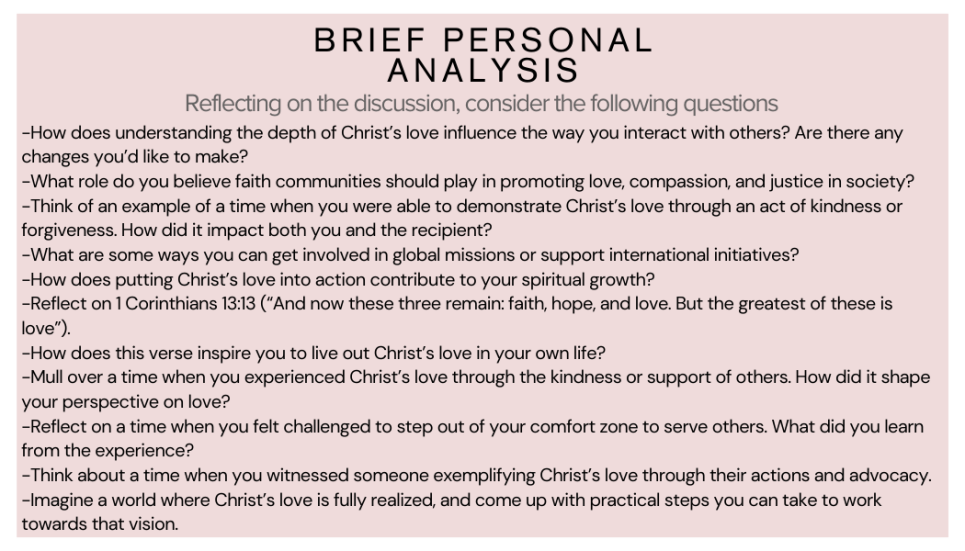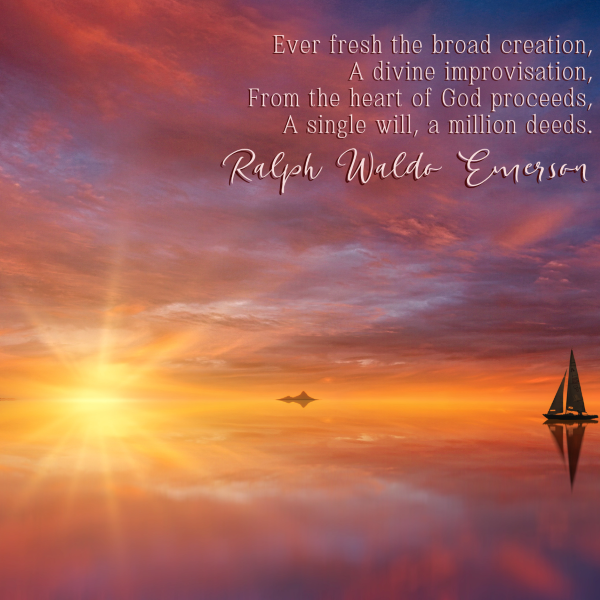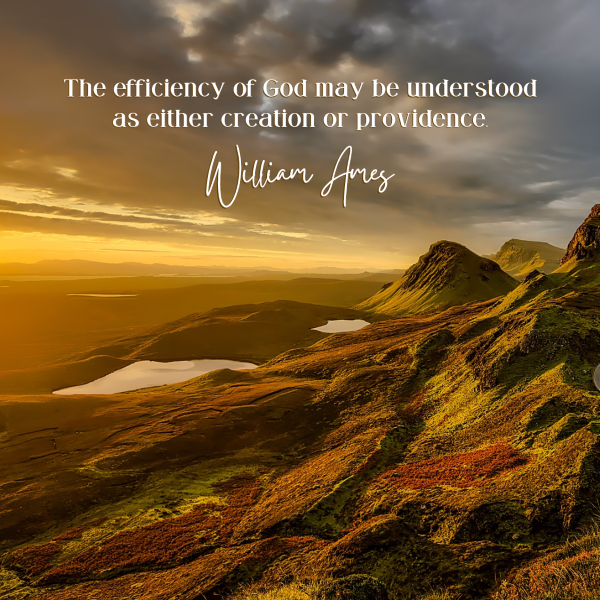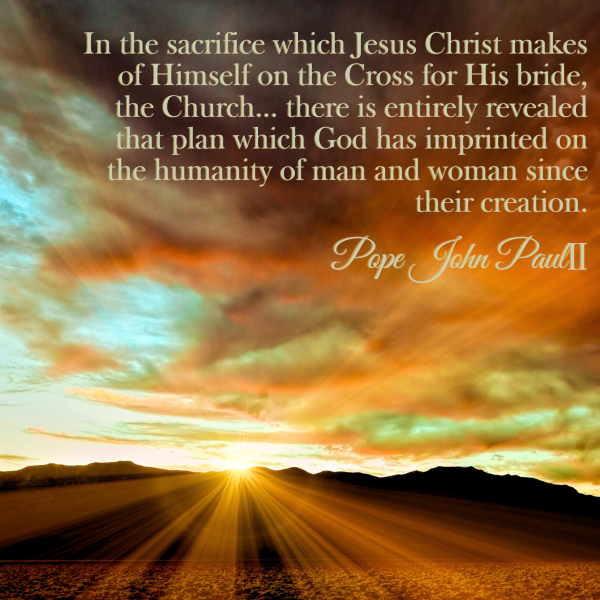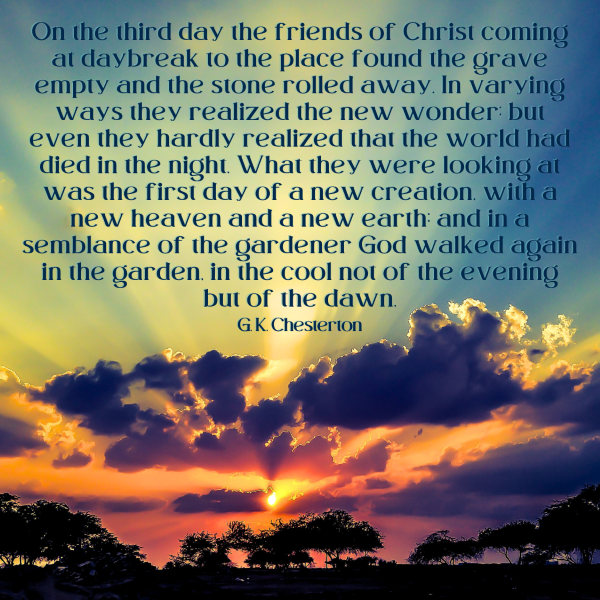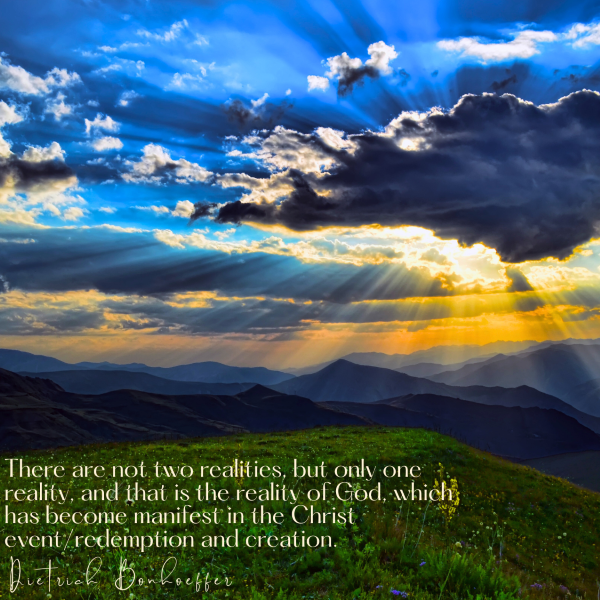Putting Christ’s Love in Action
Imagine a world where every act of kindness, moment of patience, and gesture of forgiveness is rooted in a profound love that positively impacts both the giver and the receiver. Christ’s love is an active and powerful force that compels us to live differently and is implicit in creating valuable change among others. As we explore how to embody and demonstrate His love, consider the magnitude of the outward effect of embracing the countless opportunities you have to express His love.
Understanding Christ’s Love
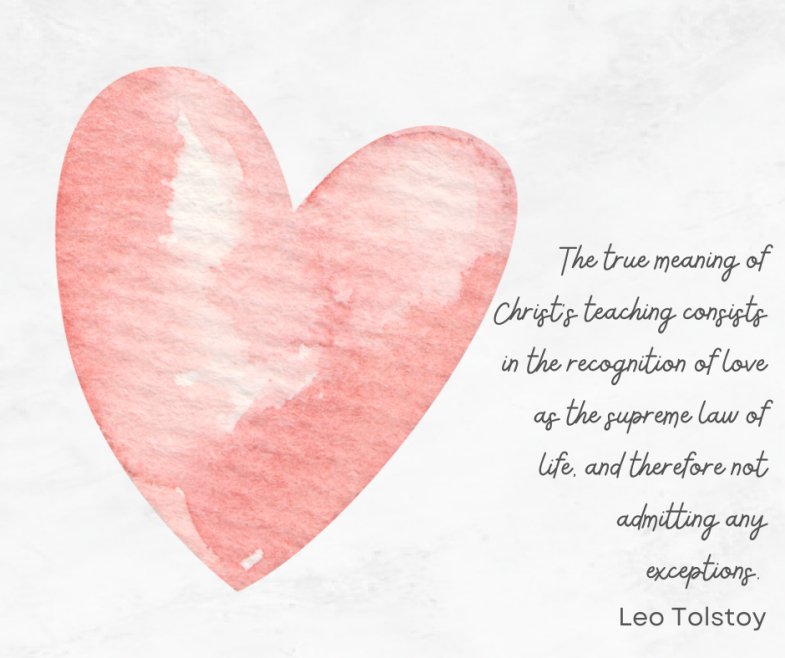
A new command I give you: Love one another. As I have loved you, so you must love one another. John 13:34
John 13:34 gives us a directive that calls us to a higher standard of love- to love as Christ loves. Suitably, we need to first gain an understanding of His love. It challenges us to question our actions and attitudes, encouraging us to adopt a lifestyle that mirrors Christ’s selflessness, humility, and compassion. It allows us to better appreciate the call to life others in the same manner as Him.
Christ’s love is fundamentally different from any other kind of love. It is unconditional, sacrificial, and all-encompassing; surpassing emotions and manifesting in actions.
Christ's love illustrated in the Bible:
Washing His Disciples’ Feet: This humble act of service defied the cultural norms of Christ’s time and demonstrated the depth of His love and humility. Washing feet was typically the job of the lowest servant, yet Jesus, the Son of God, performed this task to show that true leadership is rooted in servanthood and love.
The Samaritan Woman at the Well: Speaking with the Samaritan woman, Christ breaks cultural and social norms, offering her living water; expressing love, acceptance, and a path to spiritual renewal.
The Parable of the Good Samaritan: Through this parable, Jesus teaches the importance of loving and helping others regardless of social or ethnic boundaries, exemplifying inclusive love.
Calming the Storm: Calming the storm shows Christ's care for their safety, and provides reassurance of His love and protection.
Praying for His Persecutors: Praying to God and asking Him to forgive those crucifying Him demonstrates love that overcomes extreme suffering and injustice.
Comforting Mary and Martha: Before raising Lazarus, Jesus comforts Mary and Martha in their grief. His concern and willingness to be present show His empathy and compassion.
The Incarnation: Christ’s commitment and love are evident in His decision to become human and live among us, sharing in our experiences and struggles.
The Crucifixion and Resurrection: His death on the cross is the ultimate expression of His love. Revealing the boundless depth of unconditional love, Christ willingly laid down His life to reconcile us to God.
Internal Change and Transformation
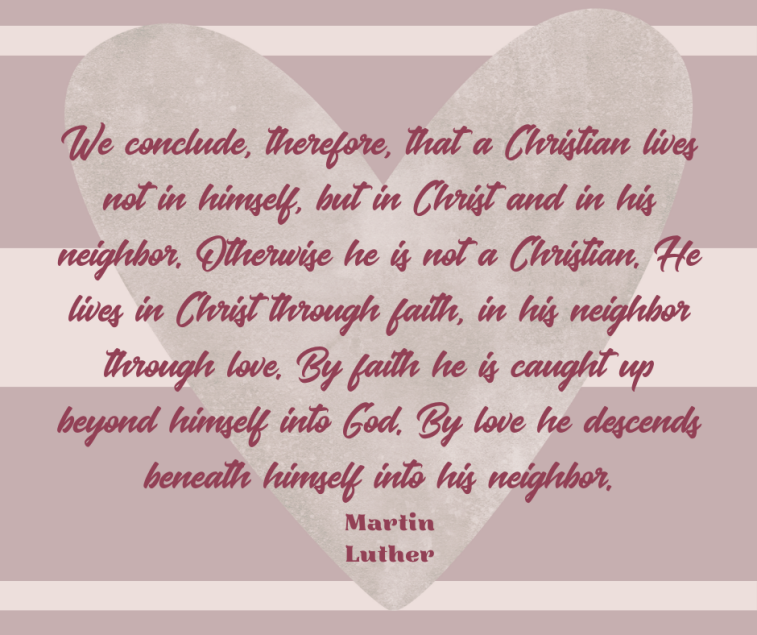
Living out Christ’s love begins with an internal transformation, a change that starts within the heart and radiates outward into our actions and relationships. Through this ongoing process of change, we become more attuned to the ways we can embody Christ’s love in our lives. As our hearts and minds are transformed, our actions naturally follow suit, making us authentic vessels of Christ’s love. This process involves establishing and maintaining a healthy relationship with Christ, so He can continually shape our words and actions. Regular prayer and scripture study provide opportunities to express our gratitude, seek guidance, internalize His teachings, and align our will with His. Reflecting Christ’s love means actively practicing forgiveness, patience, and humility. It requires us to bear with one another in love, calling us to put others’ needs before our own and serving them without seeking recognition or reward. This means letting go of grudges, responding to offenses with grace, and giving others the benefit of the doubt. Simple acts of kindness are a tangible way to put Christ’s love into action. Small and consistent gestures like offering a smile to a stranger, writing a note of encouragement, or helping a neighbor with groceries can have the most significant impact. Making these acts of kindness a regular part of our routine builds a habit of selflessness and compassion. Self-reflection helps us stay focused and accountable. Taking the time for daily self-assessments of our interactions and behaviors allows us to track our progress, and identify areas for improvement, empowering us to make more intentional decisions. Willingly adopting and adhering to practices that encourage a continued openness for growth leads to changes within our hearts, minds, and spirits, leading to a renewed way of living that reflects Christ's love.

Family and Relationships
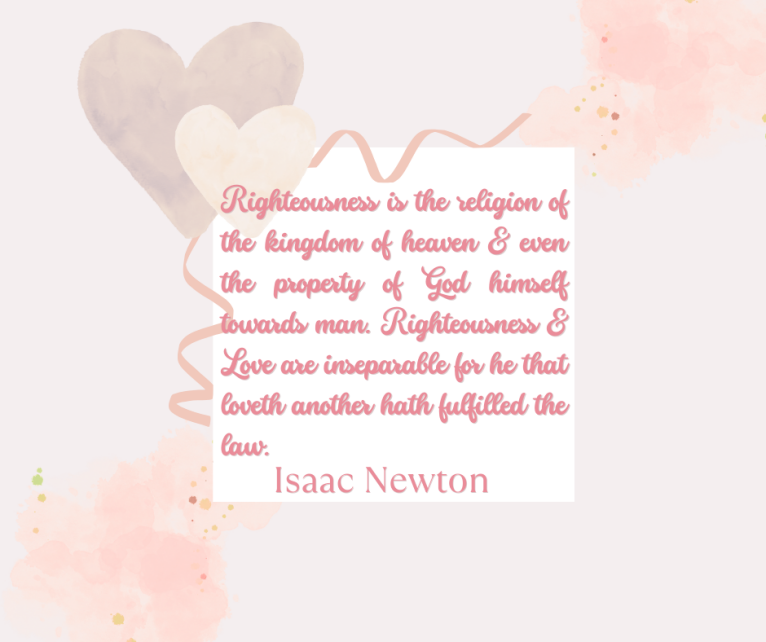
Be completely humble and gentle; be patient, bearing with one another in love. Make every effort to keep the unity of the Spirit through the bond of peace. Ephesians 4:2-3
Ephesians 4:2-3 urges us to extend Christ’s love to everyone. This is especially important within the relationships around us. Demonstrating Christ’s love within our family, friends, and associations requires intentional efforts to build a foundation of respect, honor, and empathy. Whether it’s at home, work, or any other frequently visited place, this means creating a loving and supportive environment where each personal connection feels valued and cherished. The strive for unity encompasses active listening, valuing each other’s opinions, and acknowledging each person’s contributions. Christ’s love is rooted in empathy. Regardless of times of joy, success, or trial and struggle, empathy is expressed by being a consistently present source of comfort, support, and encouragement. This nurturing atmosphere means addressing conflicts with grace and understanding. It involves choosing to approach disagreements with a mindset of reconciliation, seeking to understand the other person's viewpoint, and working together to find a peaceful resolution. Prioritizing Christ’s love in our relational interactions strengthens our bonds and allows those around us to grow and thrive.

Community Engagement
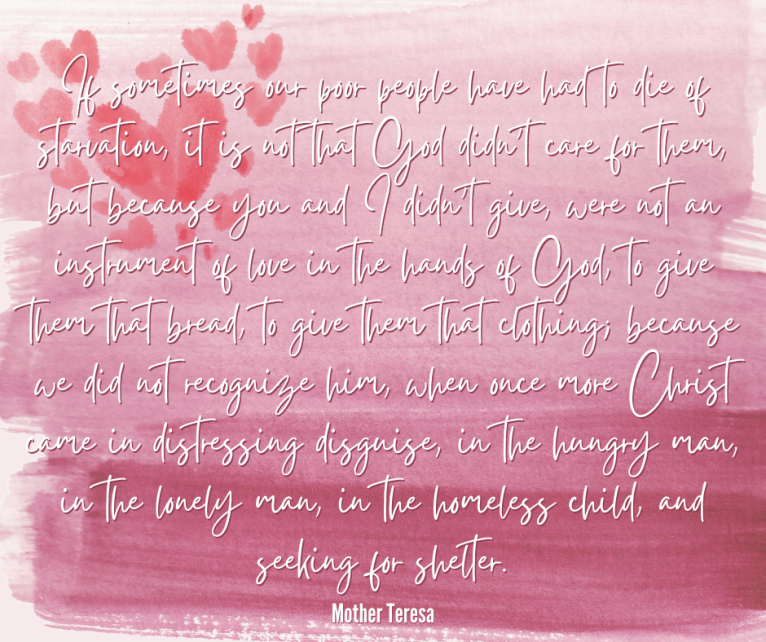
Engaging with our community provides ample opportunities to put Christ’s love into action on a broader scale that directly contributes to a lasting impact on the lives of those in need; showing them that they are seen, valued, and cared for. Through practical assistance and heartfelt empathy, serving the community involves actively seeking out opportunities to address the various needs and challenges of individuals and groups. Meeting these needs can look like volunteering at local organizations, participating in outreach programs, or advocating for social justice causes. Creating a sense of unity within our neighborhoods and cities bridges divides across cultural, racial, and socioeconomic constructs. Participating in the dialogue, collaboration, and mutual support builds inclusive and welcoming communities that recognize the inherent dignity and worth of every human being as beloved children of God.

Global Outreach

Surpassing geographical and cultural boundaries, global outreach represents a vital aspect of putting Christ’s love into action that embraces the entirety of humanity, enabling us to extend our compassion, resources, and support to communities and individuals in need across the world. Engaging in mission work offers an immersive experience to build relationships and share the message of Christ's love through word and deed through diverse cultural contexts on a global scale. Whether through short-term mission trips or long-term partnerships with local organizations, we have the chance to address a wide range of needs. This hands-on involvement allows us to witness firsthand the impact of our efforts, fostering mutual understanding and solidarity between different cultures and communities. Contributing our time, talents, and resources that support global initiatives and organizations working on the front lines of transcontinental challenges and conflict such as providing humanitarian aid, disaster relief, or sustainable development allows us to play a crucial role that stands as a testament to Christ’s love. Global outreach encompasses a commitment to promote peace and justice in areas experiencing persecution and oppression. Standing in solidarity and supporting efforts for peacebuilding amplifies the voices of the voiceless and advocates for the dignity and rights of all people, just as Christ portrayed. As we extend our hands and hearts to those in need, we participate in God’s redemptive work, ushering in a world where love, compassion, and justice reign supreme.
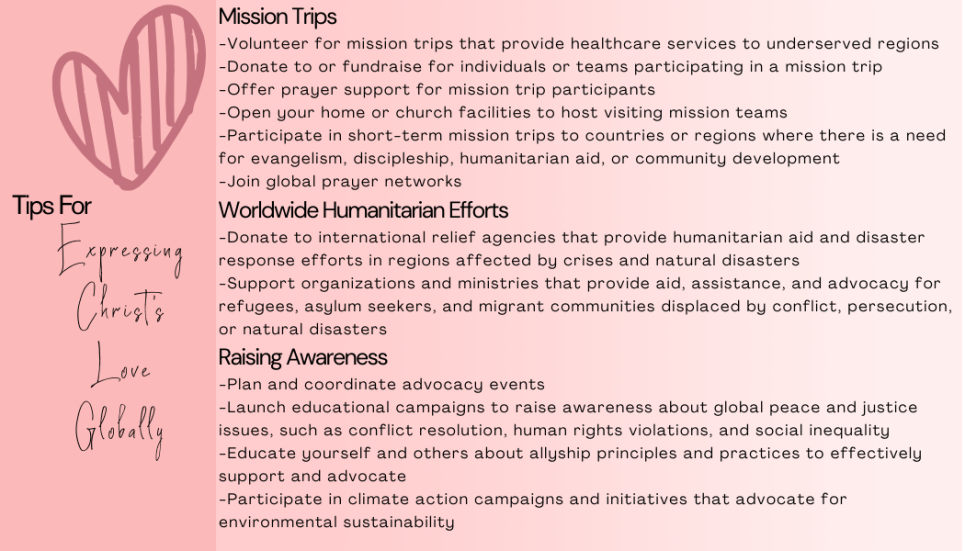
The Cycle of Christ’s Love

Each expression of Christ’s love, whatever it may be, genuine acts of service, intentional moments of empathy, words of encouragement, forgiveness, advocacy, unconditional support, respect, or recognition, illuminates the path toward a more harmonious and loving world. Inspiring those around us, it holds the potential to spark a chain reaction that gradually contributes to an ever-expanding circle of grace and humanity; transforming society into havens of empathy and understanding grounded in compassion.
Overall
The commitment to love as Christ loves calls us to be ambassadors of reconciliation, peace, and justice. It requires intentionality, perseverance, and a willingness to step out of our comfort zones. Each effort of love recognizes our shared humanity and interconnectedness. Holding the potential to heal, restore, and uplift others, it is a collective mission to create a world where everyone is valued and accepted.
Accept the challenge to live differently, to love boldly, forgive generously, and serve selflessly; creating a positive impact on our lives and the world around us, one act of kindness and love at a time.
-Torrance Community Church of Christ
Further Reflection
